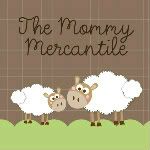Smash books are becoming increasingly popular in the classroom. Being a soon-to-be-FCS-teacher, a smash book has caught my attention. My thing is, the idea of a smash book is very new to me, and I am not that artistic. So what can an artistically challenged person do to dress up a smash book?
- Notebooks: You don't have to use the actual Smash books. They're expensive, about $9 a book! Instead, use a spiral bound notebook, a composition notebook, a journal, or hole-punched notebook paper in a 3-ring binder.
- Project Life: After completing my project life scrapbook, I had TONS of things leftover: stickers, papers, notecards, a date stamp. I am using my date stamp to take note of when I write things down. If I see something I like or an idea pops in my head, I have notecards stashed in my purse and backpack so I can jot it down before I forget. Then when I get to it, I add it to the smash book.
- Washi Tape: I love this stuff! It's tape, it doesn't rip paper when it needs to be adjusted, you don't need scissors because it tears easily, and best of all, there are so many fun designs! I've had papers to add to a page, but don't want them just floating around, especially if they fall out. Use a strip of washi tape to secure the paper down. I use it on one side of the paper, that way I can still use the notebook paper beneath the added-in paper. Amazon has a lot of designs. I have a few rolls I got a while back from Pick Your Plum. On that note...
- Pick Your Plum: this site has a daily deal on a lot of fun stuff. I've seen washi tape, baker's twine, lace, scrapbook paper, labels, fabric flowers, and a lot of other fun stuff. The deals are usually heavily discounted, so you get a great deal. You have to be on top of the site to get an order in, though, since some things sell out really fast. I've seen a sale sold out by 10 AM.
- Scrapbook paper: If you just write in your smash book and get tired of the white background, mix it up! Get out your scraps of scrapbook paper and use 'em up! Tear the edges to get a rough look, use cute trim scissors, use up your sticker stash.
- Stickers: use stickers to secure pictures or notecards to the page. Use an arrow or a bright sticker to bring attention to an idea you want to make note of.
- Doodle! You love to draw spirals? Do it! Whatever it is or however it is that you doodle, go at it! It's your smash book, make it full of you!
- Number the pages: there are times that you will come across something you want to add to your book. Jot or smash it in, then write in a reference to the page that idea connects to. Kind of like the "Choose Your Own Adventure" books. I loved those in elementary!
- Writing tools: You can add a lot of color and personality with the writing tools you use. Colored pencils, a variety of colored pens, markers, crayons, calligraphy pens. Use what you want!
Here are some of my ideas for using a smash book in my classes:
Foods
- Favorite recipes
- Cooking tips
- Favorite cookbooks
Clothing/Fashion/Sewing
- Outfit cut from a magazine
- Fabric swatch
- Sketches
- Quotes
- Tips or things learned in class
Interior Design
- Magazine cutting of a house, piece of furniture, floor layout
- Swatches
- Ideas
- Sketches
- Paint chips
- Flowers/leaves for inspiration
Child Development/Adult Roles
- Lyrics to a song
- Rules to a game
- DAP activities
- Example of writing a check/deposit slip
- Wedding ideas
FCCLA
- Ideas for Star Event project
- Handouts from meetings
- Magazine cuttings
So go ahead and Smash!
make animated gifs like this at MakeAGif






